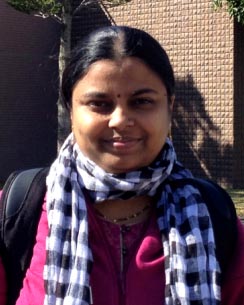
Dr R. S. Swathi
Associate Professor (Chemistry)
The activities of our research group have been in the broad area of Theoretical Chemistry. Our main objective is to provide a fundamental understanding of various chemical systems and phenomena using the methods of theoretical chemistry. We employ analytical and computational approaches involving classical as well as quantum mechanical principles in our research. Our work is mainly focused in the following areas:
1. Continuum approaches for modeling carbon nanostructures such as graphene, carbon nanotubes, fullerenes etc. Our objective is to probe adsorption on carbon-based substrates and encapsulation into carbon nanotubes and fullerenes for sensing, separation and storage applications. We also employ quantum chemical approaches for probing the interactions of atoms, ions, molecules and molecular clusters with the carbon-based materials like graphene, graphene oxide, graphane, graphyne, graphdiyne and carbon nanotubes. We are also interested in developing empirical potential parameters for carbon materials that could yield reasonably accurate results in short computational times. We often employ the electronic structure calculations as a benchmark to develop accurate modeling approaches.
2. Study of optical excitations in metal nanostructures and their utility as substrates in surface-enhanced spectroscopy using classical electrodynamics. We employ approximate analytical approaches and finite-difference time-domain simulations to probe plasmonic features in metal nanostructures. The FDTD simulations are employed as benchmarks for modeling the plasmonic properties of nanostructure aggregates. Quasi-static approximation and coupled dipole approximation are our favourites for plasmonics modeling.
